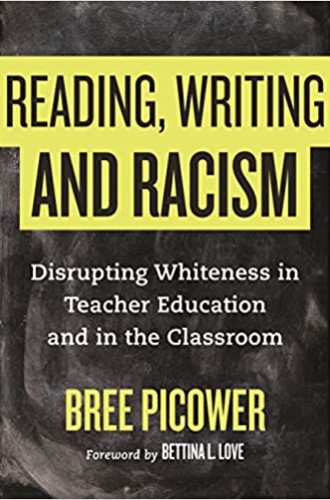What would it take for #CurriculumSoWhite to stop trending?
According to Bree Picower, it starts with the teachers—80 percent of whom are White.
In 2016, the hashtag #CurriculumSoWhite emerged on Twitter, inspired by #OscarsSoWhite the previous year. It’s been used to track examples of racism in classroom materials and assignments. Captured mostly by students and parents of color, examples from #CurriculumSoWhite include an assignment asking students to list the pros and cons of slavery, an Atlantic slave trade map labeled “Patterns of Immigration,” and a Canadian textbook that teaches, “When the European settlers arrived, they needed land to live on. The First Nations peoples agreed to move to different areas to make room for the new settlements.”
In Reading, Writing, and Racism, Bree Picower draws numerous examples from #CurriculumSoWhite, categorizing them as “curricular Tools of Whiteness” and analyzing how they operate to uphold White supremacy. These examples are revelatory and have invoked viral outrage online, but Picower finds the usual response to them—disciplinary action against individual teachers who are seen as “bad apples”—to be missing the forest for the trees. Instead, she suggests, these examples are the tip of an iceberg of White supremacy in American education that is systemic, self-perpetuating, and all-encompassing.
Interestingly, Picower does not proceed to advocate for an overhaul of curricula as the solution. Instead she identifies a deeper source of the problem: the ideology to which the teachers who select and teach these lessons are beholden. She argues that teachers—especially White teachers, who make up more than 80 percent of the educator workforce—have been so thoroughly socialized into Whiteness that they are often incapable of identifying it and thus become complicit in its perpetuation by default. She explains:





